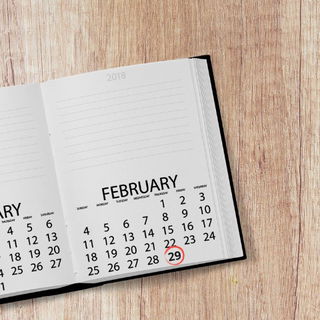The Julian Calendar, also known as the Old Style Calendar, was established by Julius Caesar in 46 BC, to replace the Roman calendar which was in use.
It was the official calendar in the Roman Empire and the Western world until 1582, when it was replaced by the Gregorian Calendar.
Today, the Julian Calendar is still used by the Eastern Orthodox Church and in Oriental Orthodoxy.
Origins and History of the Julian Calendar
Before the Julian Calendar was implemented, the calendar in use in the Roman Empire was the Roman Calendar. This calendar had 12 months and 355 days. Because the Roman Calendar was a Lunar Calendar, it was based on the moon phases, and a group of pontifices would have to observe the moon to decide when to add an extra 27-or-28 day month to keep the calendar in sync with the Seasons of the year. This process was very random, and sometimes corrupted by politicians, and although it was meant to be put in place every two to three years, there would be long periods of time without an intercalary month.
This resulted in the Roman Calendar drifting a few years from the tropical year, and because the intercalations were determined at random times many citizens did not know what day it was in the calendar.
Julius Caesar set out to reform the Roman Calendar, and create a more standardized and accurate civil calendar for the Roman Empire. After consulting with astronomer Sosigenes, it was decided that a Solar calendar - based on the Earth's orbit around the Sun, and without human intervention - would be the best option.
Together, they determined that a year should be 365.25 days long. To realign the calendar with the tropical year, Caesar added 67 days to the year 46 B.C., and started the New Year, 45 B.C. on January 1st instead of March. They also introduced leap years, where an extra day would be added every four years, so that the calendar would not fall out of sync with the Seasons.
How does the Julian Calendar work?
Similarly to the Gregorian Calendar, a year in the Julian Calendar has 365 days, divided into 12 months.
| Month | Days |
|---|---|
| Ianuarius | 31 |
| Februarius | 28 (29 on leap years.) |
| Martius | 31 |
| Aprilis | 30 |
| Maius | 31 |
| Iunius | 30 |
| Iulius | 31 |
| Augustus | 31 |
| September | 30 |
| October | 31 |
| November | 30 |
| December | 31 |
Originally, the months of Iulius and Augustus were called Quintilis and Sextilis. After Julius Caesar was murdered in 44 B.C., Mark Anthony named the month Quintilis after him. The month Sextilis was named Augustus after Caesar's successor. To honor both leaders, the Senate determined that both months should have 31 days. For this to happen, one day was removed from Februaris, and added to Augustus.
The difference between the Julian Calendar and the Gregorian Calendar
Even though a year in the Julian Calendar was closer in length to a tropical year than the Roman calendar, Julius Caesar still miscalculated the length of a year by 11 minutes. Like it happened with its predecessor, this difference caused the calendar to fall out of sync with the seasons, which affected the dates of important celebrations, such as Easter.
The main difference between the Gregorian and the Julian calendars is the year length. In the Gregorian Calendar, one year is more accurately calculated as being 365.2425 days long. The creators of the Gregorian Calendar also came up with a more precise way of calculating Leap Years.
You can learn more about the Gregorian Calendar here.
Celebrations in the Julian Calendar
The Julian Calendar is still used by the Orthodox Church as their civil and religious calendar. As such, many of their major celebrations fall on different dates of the common year than those observed by the rest of the Western world.
Here are the corresponding dates in the Gregorian Calendar:
- Orthodox Christmas is celebrated on January 7.
- Orthodox New Year, also known as Old New Year, is celebrated on January 14.
- Orthodox Easter is celebrated on May 2nd, 2021.
Other Articles that may interest you:










